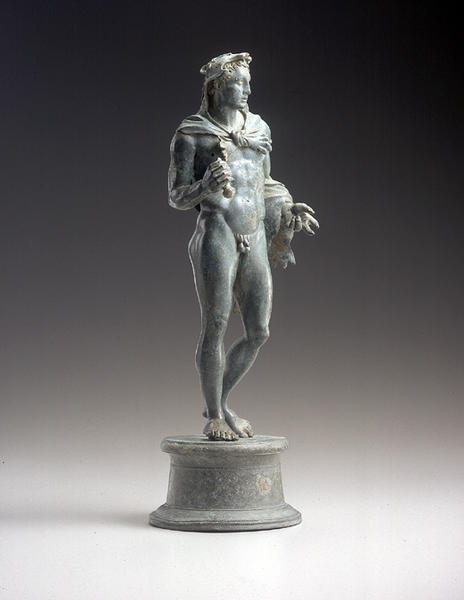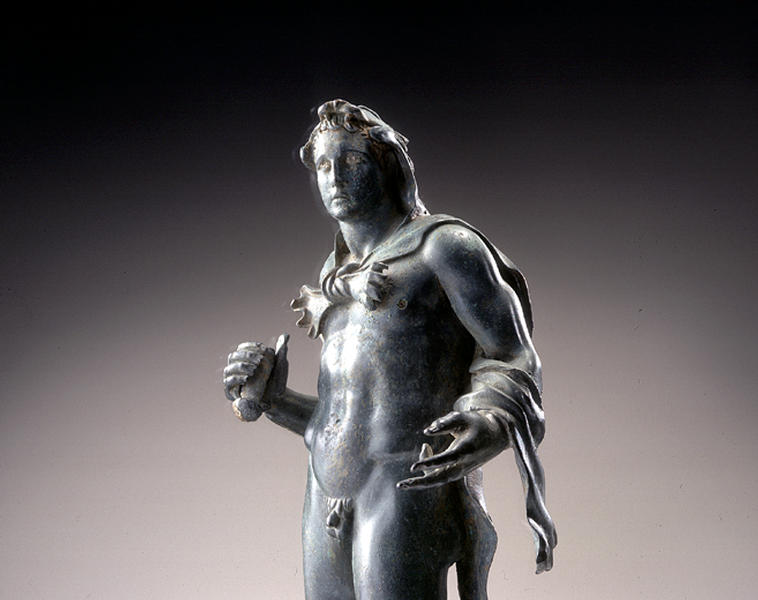ヘラクレス像
- 紀元前4-紀元前3世紀
- 青銅、ガラス
- H-20
解説(古代バクトリア遺宝展)
前4―前3世紀
青銅、ガラス
高20.0 cm
この小像はライオンの毛皮を頭からまとい、両前脚の皮を胸前でヘラクレス結びにし、左腕にその末端をかけ、右手に棍棒を持っている。これはヘラクレスの典型的な姿であるが、柔らかな質感をもち細かな毛並みが刻まれた毛皮、無駄な部分が取り去られた均整のとれた筋肉、ガラスが嵌め込まれた眼など、頭髪や指先の微妙な表現に至るまで小像としては他に類例を見ないほど真に迫った出来栄えである。この繊細さと卓越した造形表現が、このわずか20センチほどの像に実物大の大きさを感じさせるほどの迫力を与えている。これはプリニウスの言う「最も微細な部分に至るまで表現しきる超絶の繊細さ」をもった、アレクサンダー大王お抱えの彫刻家リシッポスの作行きに通じるものがある。ヘラクレスはゼウスとティリンス王妃の息子として生まれたギリシャ神話最大の英雄である。彼はゼウスの妻ヘラの嫉妬から偉大な王になりそこねたが、幾多の試練を乗り越えた後、巨人族を征服して神々を救った。この小像は青年の姿に作られているが、あるいはこの最も人気の高い英雄の姿に青年アレクサンダー大王の心象を重ねたものだったのかもしれない。
Catalogue Entry
4th‐3rd century B.C.
Bronze, glass
H. 20.0 cm
This small statue shows Hercules with a lion-head skin draped from his head and the forepaws of the lion tied across his chest. The end of this lion skin drapes across his left arm and his right hand holds a club. These are typical attributes for Hercules, but here the gently detailed depiction of the fur, the balanced musculature without excess, the glass eyes, and the minutely expressed hair and finger tips all give a verisimilitude to this small figure. The detailed quality and its superb formal expression give this 20 cm tall figure the appeal of a much larger image. This figure has "the extreme delicacy of execution even in the smallest details" described by Pliny, which can be found in the works of Lysippus, sculptor to Alexander the Great. Hercules was born the son of Zeus and the queen of Tiryns, and was the greatest hero in Greek mythology. The jealousy of Zeus's wife Hera prevented him from becoming a great king and after overcoming a number of tests, he then vanquished the race of giants and saved the gods. This small figure shows Hercules as a young man, but it could also be seen as an image of the young king Alexander dressed in the guise of the most popular hero.

